Ten years ago, I entered the cryptocurrency space with just 50,000, experiencing various pains, confusion, and self-denial before finally achieving enlightenment. I simplified my trading techniques, making them straightforward and ultimately achieving stable profits. Now my life is quite comfortable; in my free time, I fish, play football, and occasionally meet friends for a drink! Today, I share all my methods with you!
Before enlightenment, it was as difficult as climbing to the sky.
Once you get it, it's as easy as pie.
Success in cryptocurrency trading = philosophy + mathematics + psychology + skillful gambling!

(Use philosophical thinking to look at the big picture, logical thinking to look at trends, human nature thinking to look at emotions, and gambling thinking to look at trading.)
The cryptocurrency space actually requires you to view the big picture with philosophical thinking rather than logical thinking (use philosophical thinking to view the big picture); otherwise, mathematicians would succeed.
You need to use logical thinking to analyze trends rather than human nature (view trends through logical reasoning); otherwise, psychologists would succeed.
You should view emotions through human nature rather than gambling perspectives (use human nature thinking to look at emotions); otherwise, gamblers would succeed.
You should view trading through a gambling perspective rather than a philosophical one (use gambling thinking to look at trading); otherwise, philosophers would have succeeded.
The cryptocurrency circle actually requires you to be a philosopher, mathematician, and psychologist, oh, don't forget, you also need to be a skillful gambler!
Skillful gambling.
Everyone is engaged in gambling and acts with a gambling mindset, but some people's gambling mindset is too low-level and simplistic. Although they also apply gambling thinking and participate in gambling, they ultimately end up as losers.
You need to practice and learn high-level, multi-layered gambling thinking.
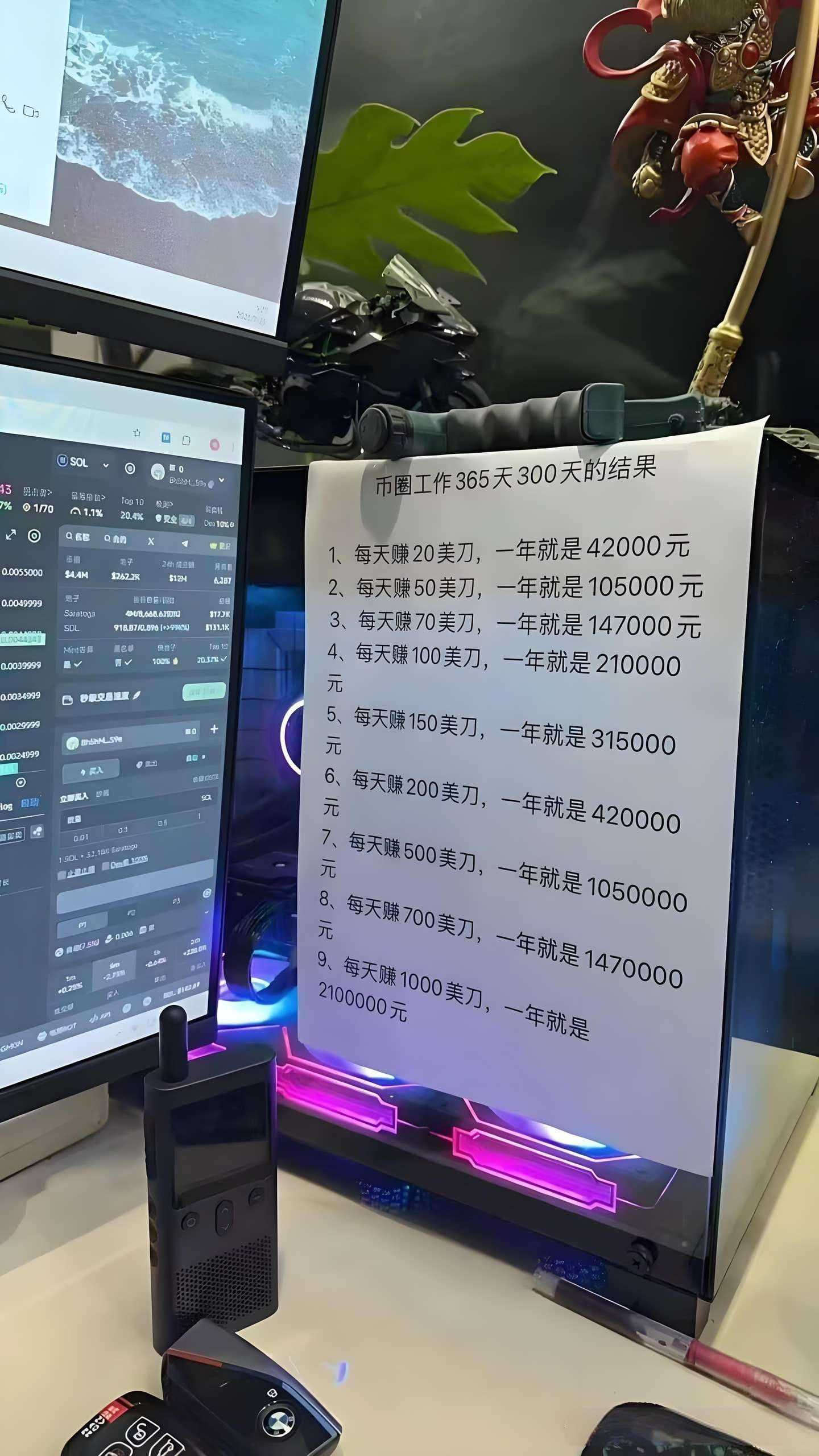
From cryptocurrency novice to expert, just master these ten golden rules!
To friends who haven't made 1 million after years of cryptocurrency trading, listen to me: these ten pieces of advice below, if followed and still ineffective, come find me!
1. If you have limited funds, you need to budget carefully. In a year, just seizing one opportunity for a big increase is enough. Don't always operate with full positions; keep some cash on hand for emergencies.
2. Your understanding determines how much you can earn. If you don't understand, you won't earn. Simulated trading is fine for practice, but trading real money can bring immense psychological pressure.
3. When good news comes out, if you haven't sold on the same day, you need to act quickly the next day when it opens high. Once good news is out, everyone thinks about selling, and the price will naturally drop.
4. With holidays approaching, reduce your position a week in advance, or simply don't sell. The market is less active during holidays, and prices can fluctuate dramatically.
5. For medium to long-term trading, you must have capital. If the price rises, sell a bit; if it falls, buy a bit. This way, you can lower costs and adjust strategies at any time.
6. For short-term trading, you need to find those actively traded cryptocurrencies. If there's no trading, you could easily get trapped.
7. Remember this rule: if it falls slowly, it usually rises slowly; if it drops sharply, it usually rebounds quickly.
8. Stop-loss is very important; if you buy the wrong one, you must acknowledge it and cut losses. Don’t think about waiting for the price to return; preserving capital is the way to go.
9. For short-term trading, look more at the 15-minute K-line chart, and combine it with the KDJ indicator to find buy and sell points. Especially when KDJ is overbought or oversold, the signals are particularly accurate. You should also consider indicators like MACD and RSI.
10. Don't learn too many technical skills; mastering a few is enough.
Having often floated in the cryptocurrency space, I'm frequently asked: How can I make money?
My answer is eight words: Don't make small profits, don't incur big losses. The words are simple, but practicing them requires enough tenacity.
Let me give you an example:
You entered with 20,000, and after opening a position, the price jumped to 21,000. Delighted, you decisively took profits, securing a 5% return, feeling great.
Never thought the market would advance rapidly to 25,000... You made 5%, but missed out on a massive wave of 50%!
After painful reflection, you tell yourself: This time I must make big money! So, when the price falls back to 20,000, you resolutely enter the market. The price rises again to 21,000, and you force yourself to suppress the urge to take profits, reminding yourself to learn from the lesson and hold on! However, the situation changes dramatically, and the price not only falls back to the original point but also dips to 19,500.
Unfortunately, you can only cut losses and leave the market.
How many retail investors struggle throughout their lives, making small gains while missing out on significant trends and failing to take profits, never finding liberation.
So, does a holy grail exist that can achieve everything? Frankly speaking: No.

This is a single-choice question. For me, I choose not to make small profits but to patiently wait.
Trading is essentially a practice that spans time. Whether in short-term battles or long-term layouts, the essence lies in seizing a wave of 200% major market movements and striving to hold on to most of the fruits. When the next opportunity arises, capturing another 200% would mean fourfold!
As long as you can sustain profits, the compounding snowball will become unstoppable. Conversely, even if you once thrived, if your final profits are fully given back, what is the point? In the trading arena, there are no missed opportunities, only losses and profits as the two outcomes.
Perhaps some have just glimpsed the doorway and feel wealth is imminent. However, merely finding the path means the probability of profit has improved. Truly practicing this set of principles of not making small profits is a rigorous test of temperament, determination, and courage.
Can you endure a long wait just for that perfect moment of a golden strike?
The anxiety of missing out, the urge to cash in when floating profits, the fear of facing losses while holding a position...

All must be repeatedly tempered in the furnace of time. If you are determined to enter this path, be extremely cautious and dare to use profits to practice and make mistakes.
Indeed, those who can find the path are already far ahead of the blindly colliding masses. After all, too many people go through life without ever seeing clearly where the path lies.
A must-read for beginners! Relying on 'light positions + following the trend' in contract trading.
This contract trading method, I will only say once:
I call it -
Six-word mantra: Light positions, control losses, follow the trend, add positions, exit, compound.

1. Start with light positions:
The biggest problem for newbies is that they start with heavy positions, gambling on right or wrong.
My approach is: start with no more than 1/10 of total funds; even if you are confident, only build positions tentatively.
Contracts are not about gambling with your life; they are about extending the timeline to control risk.
2. Loss control mechanism:
For every trade, I set a stop-loss point before opening the position, with a maximum single loss not exceeding 5% of the total account.
Stop-loss means stop-loss; never add to a losing position.
Only those who dare to cut losses can survive long-term.
3. Adding to positions in line with the trend:
My position strategy is 'discounted adding'; it's not about buying more as the price drops, but adding after the price rises!
Once the market confirms the correct direction, I will gradually enter the market and increase my stake, amplifying profits.
4. Don't add positions against the trend; only add positions in line with the trend.
Those who understand know that adding to positions is only for servicing the trend; adding against the trend will only lead to deeper losses.
I specifically studied the building trajectory of large funds; real experts only add positions during upward trends and never try to catch the bottom.
5. Plan to exit:
Profit without withdrawing is pointless.
The followers I lead take out a fixed 20%-30% profit weekly, locking in results, which stabilizes psychology and improves state.
6. Compounding positions:
Withdraw half of the profits, and let the remaining half continue to compound.
After a round, profits stack upon profits, and the speed of small accounts flipping is far beyond your imagination.
It's not about shouting blindly; it's about strategy!
Contracts aren't difficult; the difficult part is not accepting your fate.
If you keep blowing up your account, it might be better to change your mindset -
May your next withdrawal day no longer be far away.
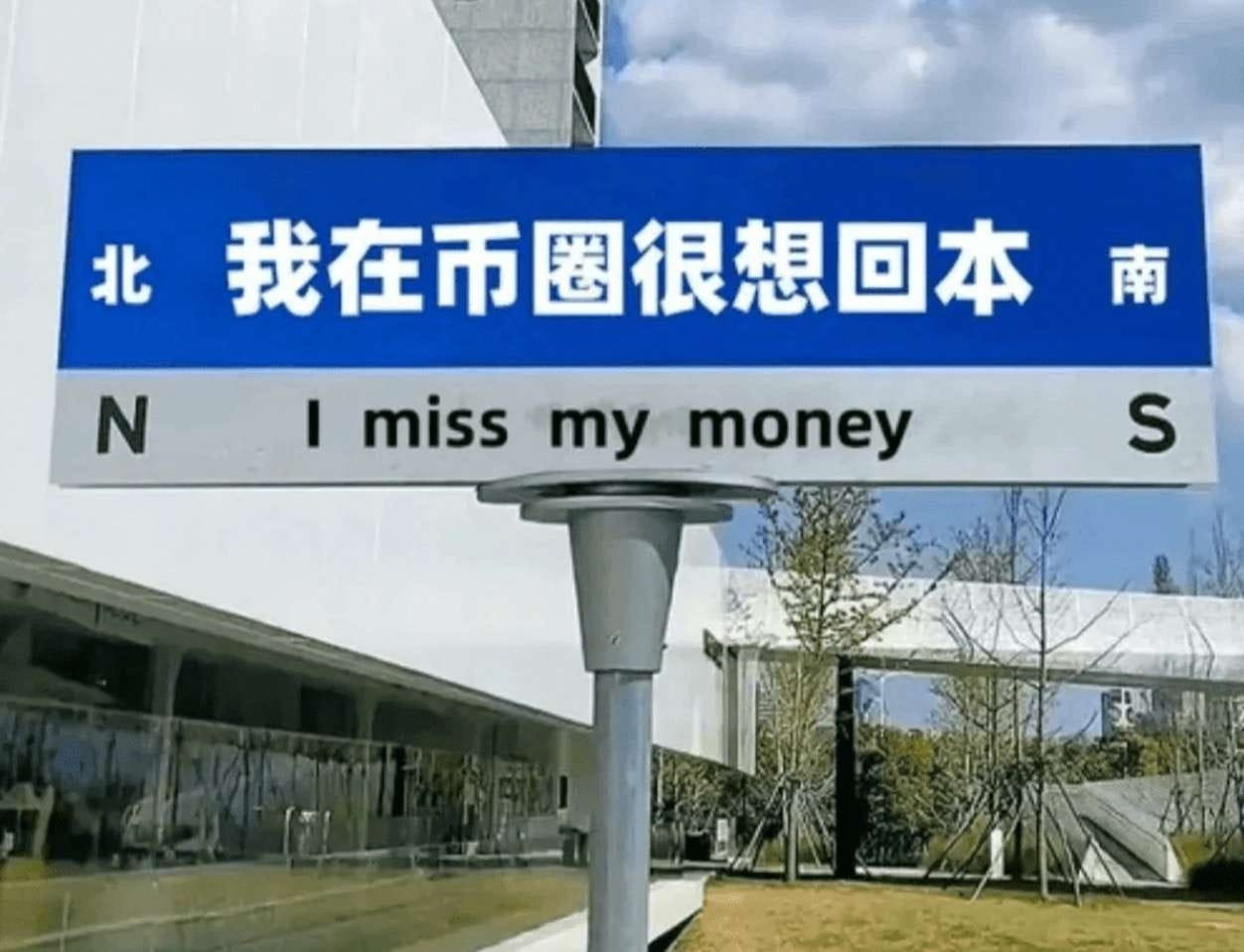
If you want to make money in cryptocurrency trading, you don't need to be a master. Sometimes, following some simple and foolish methods can be more stable and easier to survive than chasing hot trends.
The following ten rules are what I've summarized from practical experience over the years, and I hope they can help you avoid detours:
1. A strong cryptocurrency that has fallen for nine consecutive days is often a signal to enter the market.
For strong trend cryptocurrencies that are at a high level and pull back, they usually don't drop for long. If they fall for nine consecutive days, it deserves attention, and you should build positions gradually.
2. For cryptocurrencies that have risen for two consecutive days, you must partially reduce your positions.
Most cryptocurrencies that rise for two consecutive days will consolidate or pull back. Don't be greedy; make sure to take profits.
3. For cryptocurrencies that rise more than 7% in a day, the next day is likely a selling point.
Don't chase highs; maintain a wait-and-see approach, especially for non-hot cryptocurrencies. After a strong rise, the next day often leads to a pullback.
4. Former bull coins must wait for the tide to recede before re-entering.
Sentiment is useless; trends are most important. Many people are trapped by high 'star coins' simply because they refuse to acknowledge they have already started to decline.
5. For cryptocurrencies that have been flat for three days, if there's still no movement, decisively adjust your positions.
Cryptocurrencies without momentum will only waste your time and opportunity cost; if there's no movement for three days, wait another three days. If there's still no response, then leave.
6. If the next day you can't even recover the previous day's cost, you must cut your losses promptly.
Holding on without action will only make you increasingly passive; you can't just stubbornly hold on, the market won't reward emotional decisions.
7. 'Three-Five-Seven Law': For cryptocurrencies that have risen for two consecutive days, you can buy low; usually, the fifth day is the best selling point.
Many short-term markets exhibit 'inertia increases,' especially when market enthusiasm rises. The fifth day is an important observation point.
8. Price-volume relationship is key; low volume at low prices = opportunity; high volume at high prices = risk.
It's okay not to understand K-lines; just look at the trading volume. A surge in volume is a signal to start, while high-volume stagnation at high levels indicates that the main force may be unloading.
9. Only trade cryptocurrencies in an upward trend; acting in accordance with the trend gives you a chance of success.
Simply look at the moving averages:
- 3-day moving average pointing up = short-term increase.
- 30-day moving average pointing up = medium-term increase.
- 80-day moving average pointing up = initiation of a primary upward trend.
- 120-day moving average pointing up = long-term upward trend.
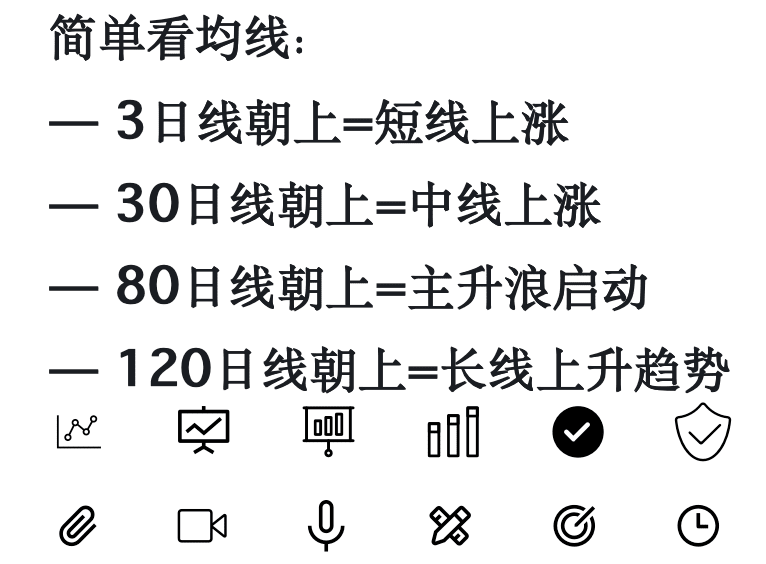
Small funds can also turn around, but you must control yourself.
Don't borrow money to trade cryptocurrencies, don't go all in, and don't blindly chase hot trends. Good risk control and maintaining rationality are the true long-term winners.
At first, I didn't believe in position discipline or trading rhythm; I always thought it was just an excuse for those who lost money.
What was I thinking at that time? As long as the market moved, I had to enter; if others made money, I couldn't fall behind; missing a wave felt like losing a lot.
But only after experiencing pain do you understand - the most hurtful thing is not losing money, but that feeling of collapse when you know you are wrong yet can't stop.
I remember very clearly, one day at two in the morning, I had just lost three trades in a row, and my account dropped 40% overnight. Staring at the last K-line, I felt completely numb.
It's not that I can't read the market, nor do I lack a stop-loss plan - it's that I simply didn't execute.

Every time you think you see the right direction, you get washed out; every time you shouldn't enter, you can't help but click in; every time you want to close the position, you still hold out hope. It's like being led by the market, and no matter how you go, it's wrong.
It wasn't until that period when I completely paused, stopped trading, and focused on reviewing my operations from the past six months that I realized my losses were not due to market conditions but rather a complete lack of process, relying on 'feelings' for trading.
Later, I met a senior who said something that completely woke me up: A true master is not someone who is more accurate, but someone who makes fewer wrong choices.
Since then, I started simplifying:
Avoid markets you can't understand.
No more than two trades a day.
Keep your position fixed, never increase your stake at the last minute.
Keep a profit and loss journal, self-review yourself.
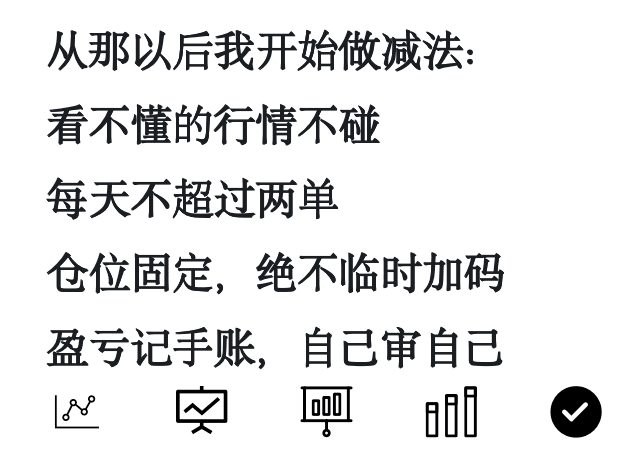
Some ask, will this cause me to miss opportunities?
I said: As long as you are still in this market, there will always be opportunities. It’s each reckless charge that truly bids farewell to opportunities.
We don't chase dreams or gamble with our lives, we only do one thing: steadily complete each step we should take.
This circle is not short on people getting rich quickly, but those who truly survive do so not out of passion, but through discipline and a sense of rhythm.
Ultimately, trading is a practice. Turning around is never about how much you made on that one trade, but rather that you no longer use trading to 'save yourself.'
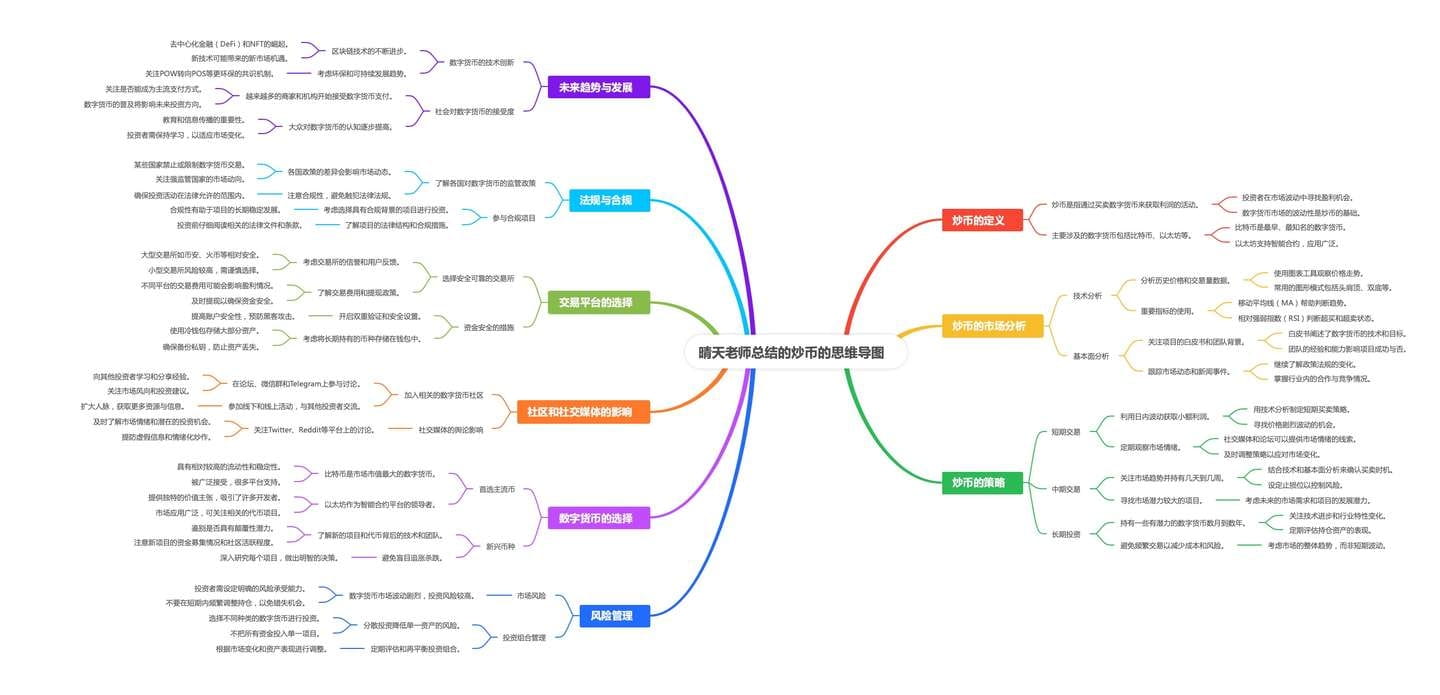
For those trading contracts, it's not that you aren't working hard; it's that you are fundamentally on the wrong path.
Do you always feel like you can 'understand the market'? But the result is either being blown out early or turning profits into losses?
The direction is right, but the rhythm is all wrong; the skills are there, yet the account is still dropping.

That's not 'bad luck'; it's that you never understood how contracts work from the beginning.
You think opening contracts is 'investment'? Wrong. You are betting in a casino built by a big player.
Every point on the K-line, every pullback, every round of consolidation, has a complete script behind it.
While you are still struggling with whether to add to your position, the system has already identified your holding direction, liquidation point, adding point, and stop-loss line.

Those technical patterns and trend judgments are, in the eyes of the exchange, already preset harvesting paths.
Let's talk about position sizes. Many people like to go 'all in' with heavy positions. But you don't realize that every 10% increase in your position size means paying more in fees, bearing greater slippage, and experiencing more mental pressure.
If you open a 20x position, if you get the direction wrong just once, you lose 10%; if you hold on without a stop-loss, the next market round will blow you out.
Those who truly survive are not the ones with the strongest skills, but the ones who decisively cut losses, maintain a steady rhythm, and strictly control their positions.

Do you know why you're losing even when you clearly did the right thing?
It's because you don't set stop-losses and panic when it drops.
It’s you frequently chasing trades, getting carried away at the slightest movement.
It's because you don't diversify; you go all in the moment you enter the market.
It’s because you have no plan, relying on gut feelings for every trade.

Contracts are not a shortcut to making quick money; they are a hard battle of 'systematic gambling.'
You need to learn how to control positions, how to add in batches, how to set reasonable stop-loss and take-profit levels, and how to plan the rhythm of each trade in advance. Otherwise, no matter how smart or hard-working you are, you will end up as the 'fee receipt' of the exchange.
Stop fantasizing about doubling your money overnight. The first step you can take is to stop making losing decisions.
Start by understanding the rules; learn to defend, and gradually you will realize that those who truly make money are not the ones who 'gamble to win' but those who understand the rules and can survive.
